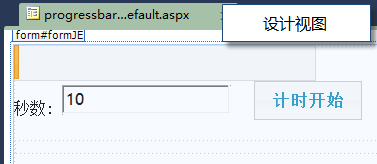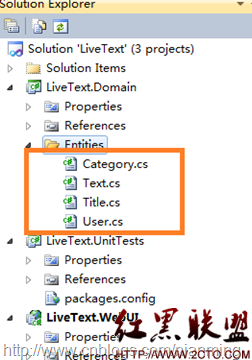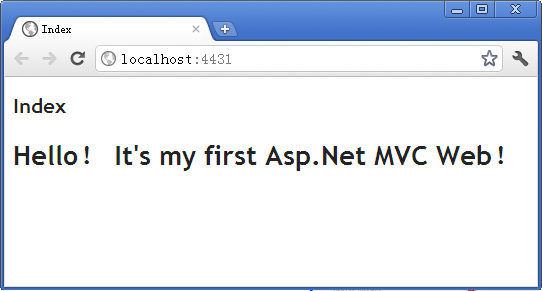在asp.net模拟用户
我曾经成功地使用windows程序成功的创建了一批带邮箱的域帐户,但是,当我把这段代码交给我的一个同事(她负责开发Web应用)迁移到Asp.Net中后,只能创建域帐户,不能创建邮箱。为什么呢?我们咨询了微软的工程师,他告诉我们,这是由于ASP.net的权限不够,我们应该在asp.net模拟用户,这样就可以成功创建。
我将微软的相关文章摘录下来:
模拟 IIS 验证的帐户或用户
若要在收到 ASP.NET 应用程序中每个页的每个请求时模拟 Microsoft Internet 信息服务 (IIS) 身份验证用户,必须在此应用程序的 Web.config 文件中包含 <identity> 标记,并将 impersonate 属性设置为 true。例如:
<identity impersonate="true" />
为 ASP.NET 应用程序的所有请求模拟特定用户
若要为 ASP.NET 应用程序的所有页面上的所有请求模拟特定用户,可以在该应用程序的 Web.config 文件的 <identity> 标记中指定 userName 和 passWord 属性。例如:
<identity impersonate="true" userName="accountname" password="password" />
注意:在线程上模拟特定用户的进程的标识必须具有“作为操作系统的一部分”权限。默认情况下,Aspnet_wp.exe 进程在名为 ASPNET 的计算机帐户下运行。不过,此帐户没有模拟特定用户所需的权限。如果您尝试模拟特定用户,则会出现一条错误信息。
要解决此问题,请使用下列方法之一:
?
为 ASPNET 帐户(权限最低的帐户)授予“作为操作系统的一部分”权限。
注意:虽然此方法可以解决问题,但 Microsoft 不建议使用此方法。
?
在 Machine.config 文件的 <processModel> 配置部分中,将运行 Aspnet_wp.exe 进程所使用的帐户更改为 System 帐户。
在代码中模拟身份验证用户
若要仅在运行代码特定部分时模拟身份验证用户 (User.Identity),您可以使用以下代码。此方法要求身份验证用户标识的类型为 WindowsIdentity。
Visual Basic .NET
Dim impersonationContext As System.Security.Principal.WindowsImpersonationContext
Dim currentWindowsIdentity As System.Security.Principal.WindowsIdentity
currentWindowsIdentity = CType(User.Identity, System.Security.Principal.WindowsIdentity)
impersonationContext = currentWindowsIdentity.Impersonate()
'Insert your code that runs under the security context of the authenticating user here.
impersonationContext.Undo()
Visual C# .NET
System.Security.Principal.WindowsImpersonationContext impersonationContext;
impersonationContext =
((System.Security.Principal.WindowsIdentity)User.Identity).Impersonate();
//Insert your code that runs under the security context of the authenticating user here.
impersonationContext.Undo();
Visual J# .NET
System.Security.Principal.WindowsImpersonationContext impersonationContext;
impersonationContext =
((System.Security.Principal.WindowsIdentity)get_User().get_Identity()).Impersonate();
//Insert your code that runs under the security context of the authenticating user here.
impersonationContext.Undo();
在代码中模拟特定用户
若要仅在运行代码特定部分时模拟特定用户,请使用以下代码:
Visual Basic .NET
<%@ Page Language="VB" %>
<%@ Import Namespace = "System.Web" %>
<%@ Import Namespace = "System.Web.Security" %>
<%@ Import Namespace = "System.Security.Principal" %>
<%@ Import Namespace = "System.Runtime.InteropServices" %>
<script runat=server>
Dim LOGON32_LOGON_INTERACTIVE As Integer = 2
Dim LOGON32_PROVIDER_DEFAULT As Integer = 0
Dim impersonationContext As WindowsImpersonationContext
Declare Function LogonUserA Lib "advapi32.dll" (ByVal lpszUsername As String, _
ByVal lpszDomain As String, _
ByVal lpszPassword As String, _
ByVal dwLogonType As Integer, _
ByVal dwLogonProvider As Integer, _
ByRef phToken As IntPtr) As Integer
Declare Auto Function DuplicateToken Lib "advapi32.dll" ( _
ByVal ExistingTokenHandle As IntPtr, _
ByVal ImpersonationLevel As Integer, _
ByRef DuplicateTokenHandle As IntPtr) As Integer
Declare Auto Function RevertToSelf Lib "advapi32.dll" () As Long
Declare Auto Function CloseHandle Lib "kernel32.dll" (ByVal handle As IntPtr) As Long
Public Sub Page_Load(ByVal s As Object, ByVal e As EventArgs)
If impersonateValidUser("username", "domain", "password") Then
'Insert your code that runs under the security context of a specific user here.
undoImpersonation()
Else
'Your impersonation failed. Therefore, include a fail-safe mechanism here.
End If
End Sub
Private Function impersonateValidUser(ByVal userName As String, _
ByVal domain As String, ByVal password As String) As Boolean
Dim tempWindowsIdentity As WindowsIdentity
Dim token As IntPtr = IntPtr.Zero
Dim tokenDuplicate As IntPtr = IntPtr.Zero
impersonateValidUser = False
If RevertToSelf() Then
If LogonUserA(userName, domain, password, LOGON32_LOGON_INTERACTIVE,
LOGON32_PROVIDER_DEFAULT, token) <> 0 Then
If DuplicateToken(token, 2, tokenDuplicate) <> 0 Then
tempWindowsIdentity = New WindowsIdentity(tokenDuplicate)
impersonationContext = tempWindowsIdentity.Impersonate()
If Not impersonationContext Is Nothing Then
impersonateValidUser = True
End If
End If
End If
End If
If Not tokenDuplicate.Equals(IntPtr.Zero) Then
CloseHandle(tokenDuplicate)
End If
If Not token.Equals(IntPtr.Zero) Then
CloseHandle(token)
End If
End Function
Private Sub undoImpersonation()
impersonationContext.Undo()
End Sub
</script>
Visual C# .NET
<%@ Page Language="C#"%>
<%@ Import Namespace = "System.Web" %>
<%@ Import Namespace = "System.Web.Security" %>
<%@ Import Namespace = "System.Security.Principal" %>
<%@ Import Namespace = "System.Runtime.InteropServices" %>
<script runat=server>
public const int LOGON32_LOGON_INTERACTIVE = 2;
public const int LOGON32_PROVIDER_DEFAULT = 0;
WindowsImpersonationContext impersonationContext;
[DllImport("advapi32.dll")]
public static extern int LogonUserA(String lpszUserName,
String lpszDomain,
String lpszPassword,
int dwLogonType,
int dwLogonProvider,
ref IntPtr phToken);
&
补充:Web开发 , ASP.Net ,



